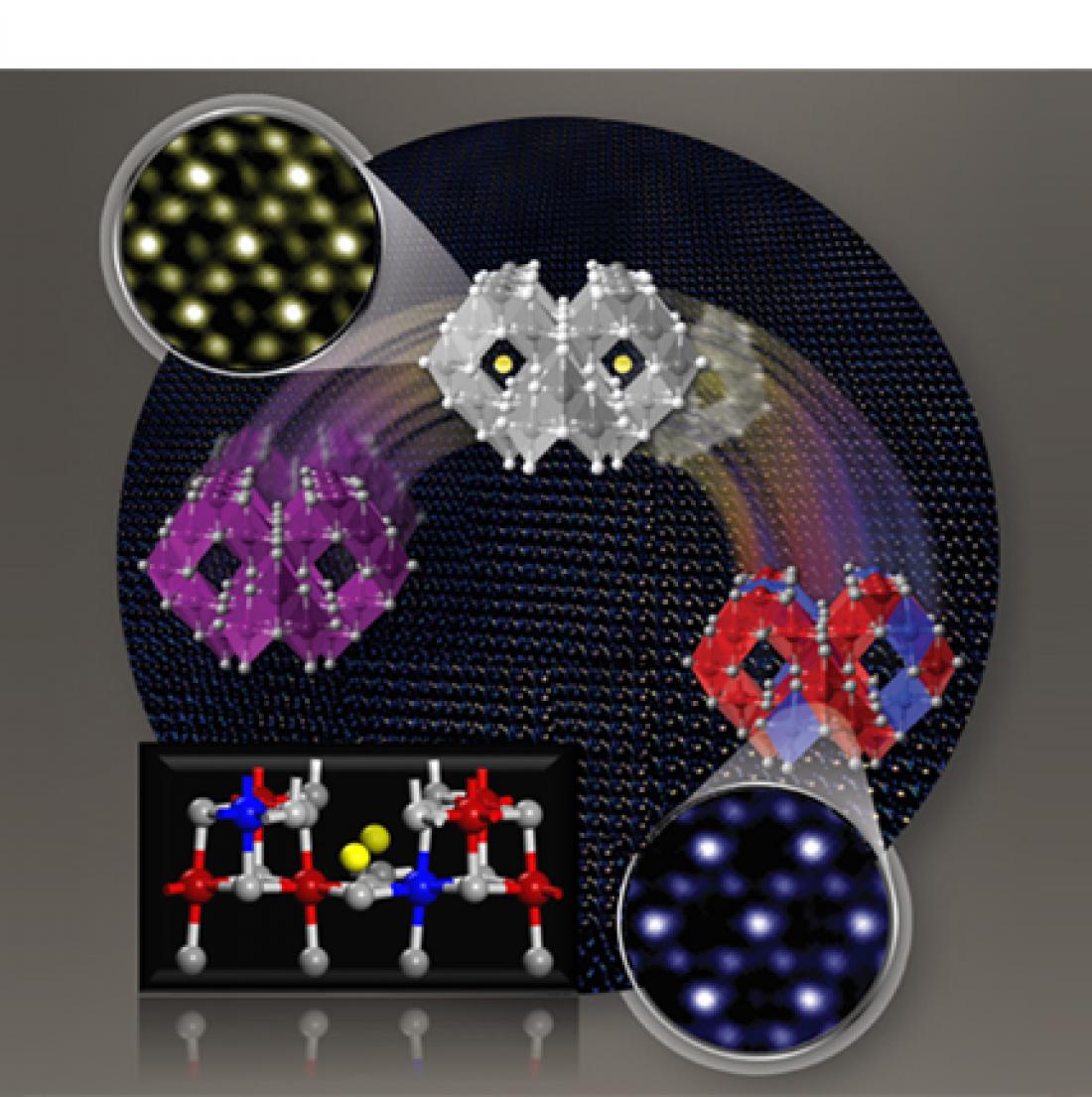Schematic illustration of atomic ordering in an oxide via the formation of point defects as a transient state.
Even if two crystalline systems have an identical crystal structure with the same overall composition, their physical properties can remarkably vary relative to each other, strongly depending upon whether the composed atoms are arranged in an orderly manner or not. The identification and subsequent control of the chemical ordering in multi-component crystalline systems have, thus, been among the central issues in structural chemistry over the past several decades. A number of binary metallic alloys serve as prototypical examples that straightforwardly demonstrate how the degree of chemical order affects the resultant physical properties, such as the electrical resistivity, magnetic susceptibility, and plastic deformation behavior of crystals. In addition, many notable studies have been extended even to the elucidation of local chemical ordering and visualization of atomic-scale antisite exchange disordering for better catalytic performance and energy conversion/storage efficiency.
Prof. Sung-Yoon Chung’s group in the Graduate School of EEWS (Energy, Environment, Water, and Sustainability) at the Korea Advanced Institute of Science and Technology (KAIST) has successfully demonstrated how the cation ordering occurs in Li(Mn1.5Ni0.5)O4 spinel, which is a promising cathode material for high-voltage Li-ion batteries. To consistently provide an integrated body of experimental and theoretical evidence, combined techniques were utilized, including high-resolution electron microscopy (HREM) and scanning transmission electron microscopy (STEM) for atomic-scale direct observations, in situ image capturing in STEM and high-temperature X-ray powder diffraction for real-time investigations, and density-functional theory (DFT) calculations for quantitative estimation of the energy barrier during ordering. In particular, atomic movements during the ordering transition were clearly captured in real time in STEM.
An electron beam accelerated with high voltage in TEM can transfer sufficient energy to a specimen, and on this basis, this approach has been properly utilized in recent in situ studies for real-time observations regarding the phase transformation, crystal coarsening, and diffusion of atoms. In the present study, to induce the atomic displacement process and to subsequently examine the formation of point defects in Li(Mn1.5Ni0.5)O4, an intensified convergent electron beam was applied on narrow regions in a disordered crystal in STEM. While no structure variation was observed during scanning with electrons in normal imaging mode, dynamic fluctuation in the column intensity between the octahedral sites could be identified when an electron beam with a higher current (>50 pA) scanned a confined region of 3×3 nm2.
The findings in this study illustrate that the rate at which the ordering transition takes place strongly depends on how readily the point defects can be induced in the lattice. In addition to elucidating the kinetic pathway for ordering transformation, the present study emphasizes that the role of point defects in crystals is not confined merely to mass and charge transport in general but extends even to phase transitions, where these defects act as a critical mediator between two phases.
This work was published in Angewandte Chemie International Edition (2015, 54, 7963-7967) and was selected as the Inside Back Cover of the issue due to the importance of the direct observation in this rapidly evolving field of high interest.



